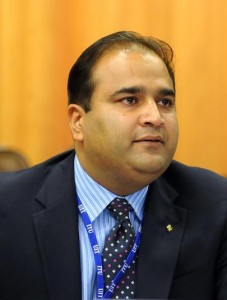
The spread to global ubiquity of the telephone has been rapid. According to ITU, more than half of the world’s households now own a fixed telephone; in addition, there are in the region of 2 billion mobile subscribers, and the mobile footprint covers as much as 77{e1f18614b95d3cd6e4b3128e1cd15d99b042a60a5a19c19b7a8e07e7495efa10} of the world’s population. Developing countries now lead the way in the mobile revolution, not least China, by far the world’s largest mobile market, and there are considerably more mobile subscribers in the developing than the industrial world. Because of great demand, continued technological advancement, and continued reform, developing countries may invest as much as US$100 billion in information infrastructure rollout each year over the next few years. They will account for the great majority of new network subscribers. As many as 80{e1f18614b95d3cd6e4b3128e1cd15d99b042a60a5a19c19b7a8e07e7495efa10} of new subscribers added to global mobile networks over the 2006–2011 period will be in Africa, the Middle East, Asia, and Eastern Europe. As a result, it is quite likely that developing countries will be setting trends in applications, revenue models, and cost-saving approaches, especially for mobile networks. In particular, these networks will provide an increasingly important platform for retail services to poor people.
At the same time that the reach of networks and especially mobile coverage is growing, the capacity of the spectrum to carry information is also exploding. Over time, technology has evolved in ways that make it possible to build much more efficient and dynamically responsive radio systems that can allow many users and uses to simultaneously share the same frequency bands. Technologies like smart antennas, spread spectrum modulation, and cognitive radios are making it feasible for transceivers to dynamically change their frequency, modulation, or power levels to enable more efficient and intelligent spectrum sharing. As a group, these technologies enable users to transmit at the same time, in the same place, on the same parts of the spectrum. Combined with technologies such as 3G and WiMAX, they have the potential to significantly increase the capacity of the spectrum to support data applications and wireless broadband.
For developing countries, cheap, simple mobile devices will remain central to extending access to poor people. Given convergence and greatly increased spectrum capacity, however, the number of applications available over those devices is likely to expand. And, if the last few years are any guide, it may be that developing countries will again provide a base of innovation. Adding together the ARPU of mobile, fixed and Internet in Pakistan comes to US$16, compared with a similar figure in the United States of US$143. Nonetheless, the “triple play” of voice, video, and data may be particularly important to developing country operators to preserve ARPUs and reduce churn. Despite rapid progress and global leadership in business models in some parts of the ICT sector, developing countries still face many challenges to ensure they can fully reap the benefits of the next decade’s changes in ICT provision and use. Barriers to progress include the need for further regulatory reform, issues surrounding the taxation of ICTs, continued concerns about the extent and quality of backbones, and perhaps most importantly, attention to the broader business environment.
Perhaps the next 10 years will see the revival of business and regulatory models launched in the past 10 years that were before their time. For policy and regulatory agencies, if spectrum scarcity really does come to an end while competition spreads, and countries follow the model of controlling content through law enforcement agencies and the courts rather than an industry-specific body, the role for an independent regulatory body for telecommunications infrastructure may become questionable. The market may become so competitive that regulation is not required, or so complex and fast-changing that regulation cannot keep up. The history of communications is littered with past failures to predict the future; at a time of such dramatic change, confidence regarding the particular direction of future change might be particularly unwise.











